Visit the Sanctuaries of our Lady of Lourdes to experience a spiritual renewal and inner reconciliation. Pray at the Grotto of Apparition, light a candle, join the evening procession with piety, immerse yourself in a bath of holy water to be cleansed physically in faith, and fill bottles of this healing water to take with you.
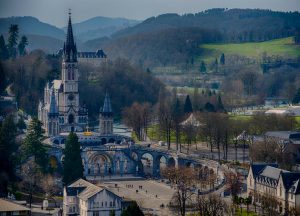
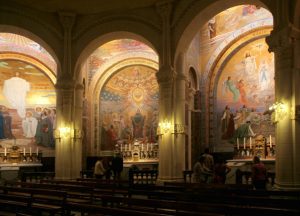
Inside ‘Basilique Notre Dame du Rosaire’. The Basilica’s main theme is a celebration and depiction of the Rosary. The large mosaics decorating the fifteen radiant chapels, each dedicated to one of the mysteries of the Rosary, were drawn by seven different artists over a space of thirteen years. The style is influenced by Byzantine architecture.
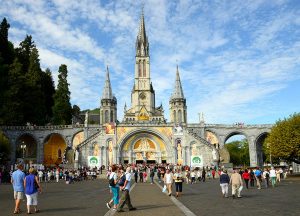
Outside the ‘Basilique Notre Dame du Rosaire’ are three semicircular chapels. The closest to the church is dedicated to Our Lady of Guadalupe. The second is dedicated to Saint Bernadette and decorated with a large mosaic on a gold background. The third is devoted to Saint Pascal Baylon; because of his great devotion to the Eucharist.
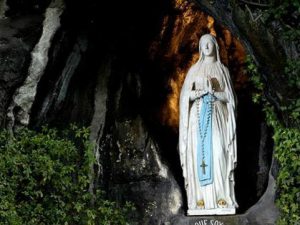
‘La Grotte des Apparitions’ is the place where the Virgin appeared in 1858 to Bernadette Soubirous at 14 year of age. On the left of the Grotto is the Source indicated by the Virgin. The water from this spring has been claimed to cure nervous disorders, cancers, paralysis and even blindness.
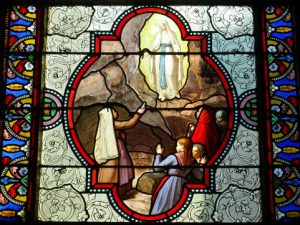
Stained glass at the ‘Basilique de l’immaculée conception’ showing the apparition of Virgin Mary to miller’s daughter Bernadette Soubirous. The Virgin appeared in total 18 times to Bernadette between Feb 11th to July 16th 1858. At the 15th appearance on March 4th 1858, over 9,000 people were present.
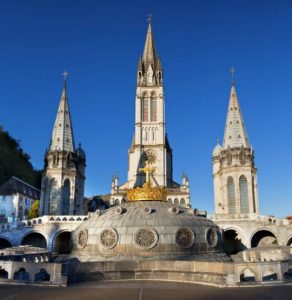
The original gold paint of the crown at the entrance of the basilica included the gold from the wedding rings of Irish married women.
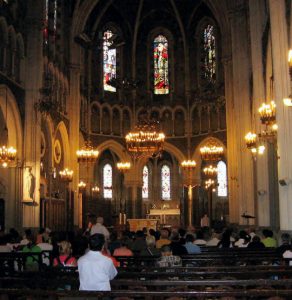
Inside the ‘Basilique de l’immaculée conception’ you find Neo-Gothic architecture. Mass in various languages is held throughout the day.
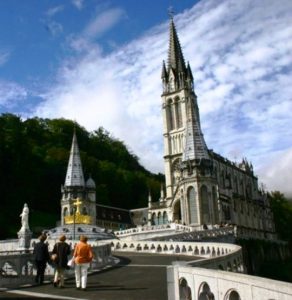
‘Basilique de l’immaculée conception’. This Basilica is the uppermost of three cathedrals above the ‘grotte’.
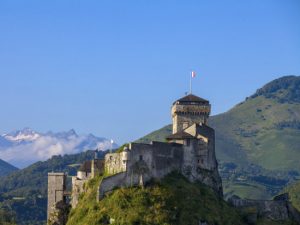
The ‘Château Fort de Lourdes’ was held by English kings for centuries. In the 17th century it became a royal prison until the start of the 20th century when it became a museum.
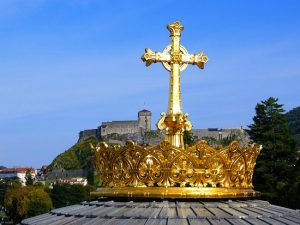
‘Le Château Fort‘ seen from the entrance of the ‘Basilique de l’immaculée conception‘. The Castle is strategically placed at the entrance to the seven valleys of the Lavedan, on top of a hill in the middle of the city.